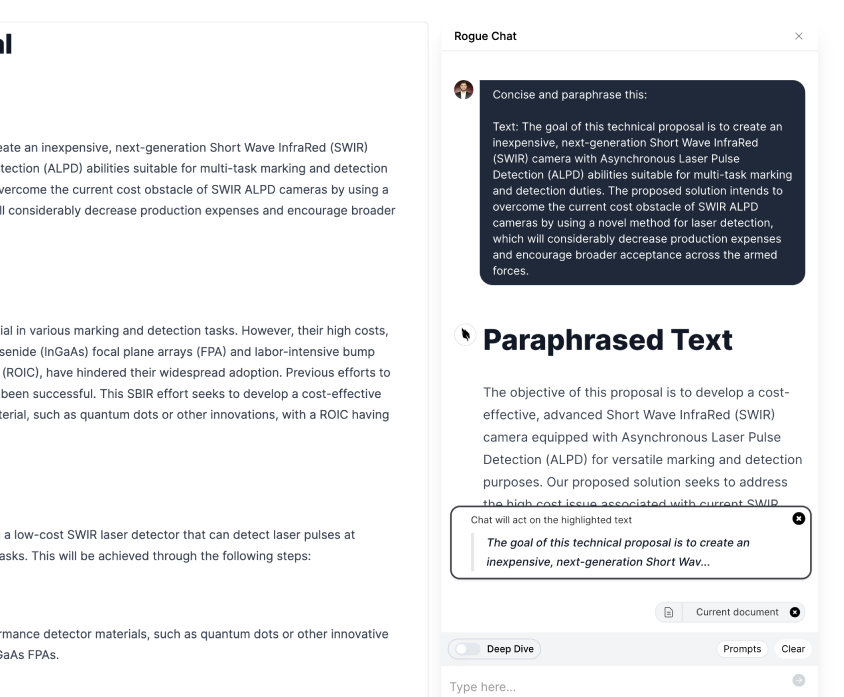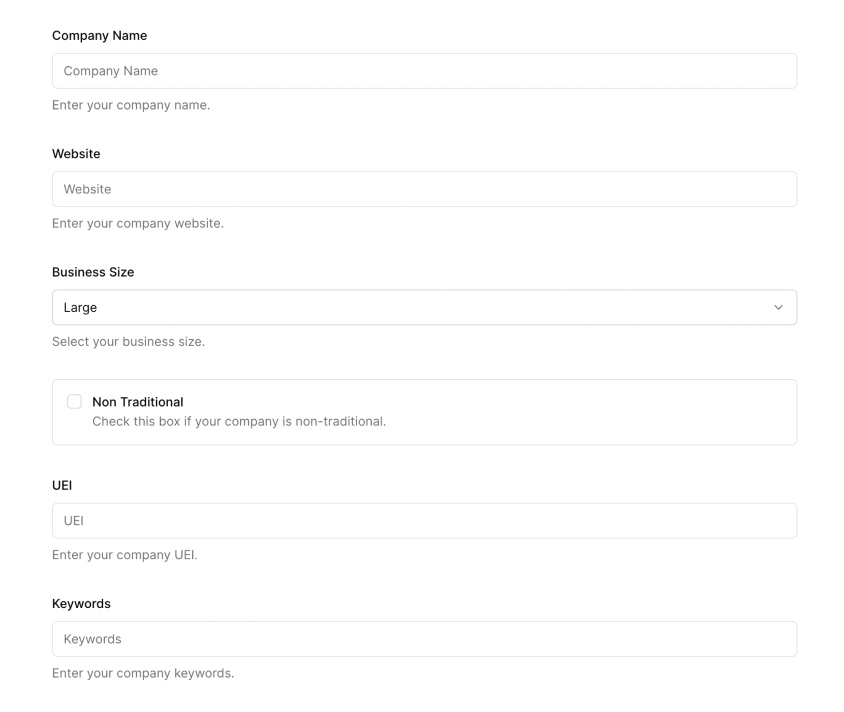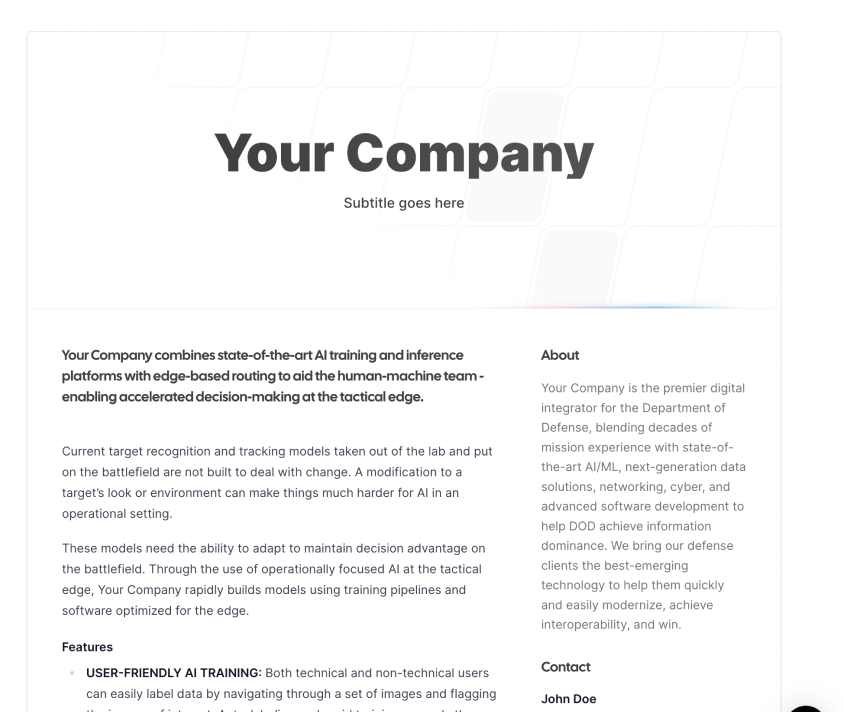
Collaborative Writing with AI: The Future of Government Proposals
Collaborative writing with artificial intelligence (AI) has emerged as a promising solution for streamlining proposal generation processes.
Table of contents
I. Introduction
Writing a government proposal is an essential step towards winning a contract, regardless of how well you may know the customer. As a government proposal manager or technical writer, you are undoubtedly aware of the challenges that come with crafting the perfect proposal: tight deadlines, complex requirements, and the need for collaboration among multiple team members with diverse expertise. The process can be complex and time-consuming, requiring extensive research, analysis, and documentation. It involves presenting your organization's capabilities and qualifications to meet the requirements specified in the solicitation document. Given the importance of this task, it is crucial to have a solid strategy in place that maximizes efficiency and accuracy while minimizing errors.
Collaborative writing with artificial intelligence (AI) has emerged as a promising solution for streamlining proposal generation processes. By leveraging advanced algorithms and machine learning techniques, AI tools can help teams work together more effectively while also reducing errors and inconsistencies in their writing. This approach enables organizations to produce high-quality proposals faster than ever before without sacrificing quality or attention to detail.
While some people may view AI as a threat to traditional writing methods, others see it as an opportunity for innovation and growth. With its ability to analyze vast amounts of data quickly and accurately, AI offers new possibilities for collaboration among writers across different disciplines and backgrounds. As such, it represents one potential path forward for those seeking ways to improve their government proposal generation processes over time - allowing them not only stay competitive but also thrive amidst changing market conditions over time.
II. The Rise of AI in Proposal Generation
In recent years, artificial intelligence (AI) has emerged as a game-changing technology in many industries, including government proposal generation. AI-driven tools designed to streamline the proposal development process like UseRogue.com are coming to market, and there is some introductory use cases that you can try using freely available models like ChatGPT and Google Bard.
Some of the key tip of using generative AI models in proposal generation include:
- Technical questions: your engineers, program managers, and product managers have other things to do and hard often hard to get a hold of during the compressed timeline of proposal development. Rather than calling them or simply searching the topic and trying to decipher a paper on the subject, try asking your favorite GPT (Userogue.com, chat.openai.com, bard.google.com): "explain <insert topic here> in highly technical detail". Chances are pretty good that the output is good enough for a pink or red team place holder. Then, send that segment to your subject matter expert and ask them to tailor it. Working from a draft is 10x faster and easier than from a clean sheet of paper.
- One Voicing: AI-powered tools can ingest a large amount of text and return a more consistent and flowing piece of content. Give it a shot, just copy and paste a section of content and tell the model "make this flow better". At the very least it will take care of the most egregious issues. You can also do things like "make this active voice" or "make this third person", which aleviates a lot of the lowest-value editing that is nonetheless necessary. Keep in mind that models have input, or "token" limits, most of them limit you to a couple of pages of text, so keep that in mind, you may have to do a number of iterations.
- Content Cutting: We have all been there - white team is rapidly approaching and we're five pages over, who's going to cut? Easy, take some larger sections of content, paste them into the chat and tell it to "make this more concise". Again, it wont do a perfect job, but it will get you form a page to a paragraph while retaining the key features and points.
III. The Tools Available
So you're ready to give it a try, where should you start?
Here are some examples of AI-powered collaboration tools that can benefit your proposal management workflow:
- https://UseRogue.com: When it comes to generating government proposals, the task can often be time-consuming and tedious. This is where UseRogue comes in as a specialized tool designed specifically for proposal writing. Unlike general purpose GPTs that require manual tasks, UseRogue automates many of these processes to streamline the overall proposal generation process. With its user-friendly interface and advanced AI capabilities, UseRogue is a reliable tool that can help government contractors produce high-quality proposals efficiently and effectively.
- **https://chat.openai.com/:** ChatGPT is a cutting-edge AI-powered tool that can greatly assist in crafting cohesive, comprehensive, and persuasive government proposals by generating relevant content and refining existing text. Its ability to understand context and provide accurate information makes it a valuable asset in streamlining the proposal writing process and ensuring a high-quality final product.
- https://bard.google.com: Google Bard, while not as advanced as some alternatives, can still provide assistance in government proposal writing by offering basic content generation and text suggestions. However, its limited contextual understanding and accuracy may require additional manual editing and refinement to create a polished and compelling final proposal.
- https://gomoonbeam.com: Moonbeam is primarilly designed for writers, while not specifically optimized for government proposal writing, it excels in generating content for blogs and articles with its exceptional ability to understand context and produce engaging text. This versatility makes it a valuable tool for various types of writing, but may necessitate extra attention and manual editing when used for crafting government proposals.
- https://quillbot.com: primarily designed as a paraphrasing tool, can still provide some assistance in government proposal writing by helping to rephrase existing text for clarity, conciseness, and originality. While it may not offer comprehensive content generation capabilities, it can be a useful aid in refining and polishing the language within a proposal.
IV. Overcoming Concerns
Despite the many benefits of integrating AI into the government proposal generation process, you may have concerns about potential issues such as security and confidentiality. Opt for established, trustworthy AI-driven tools with robust security measures in place to protect your data. For instance, ChatGPT, Google Bard, and Bing Chat use your input data to help refine and train their models. So you should be careful what you enter into these interfaces. UseRogue.com and other tailored platforms have data protection and segregation built-in, so as you progress in AI adoption, you may want to consider one of these tools. Remember that nothing is free, you simple pay with a different currency, and when it comes to online tools, that currency is almost always your precious data.
V. Parting Thoughts
The future of government proposal generation is undoubtedly intertwined with the continued advancement of AI technology. By embracing AI-driven tools and strategies, you can transform your proposal management workflow, overcome common challenges, and ultimately secure more contracts and funding for your organization.
As a proposal writer or manager, it's essential to stay informed about the latest technological advancements in AI and adapt your processes accordingly. By doing so, you'll be better equipped to navigate the rapidly evolving world of government proposals and ensure the success of your team and organization.
Sign up for Rogue today!
Get started with Rogue and experience the best proposal writing tool in the industry.



